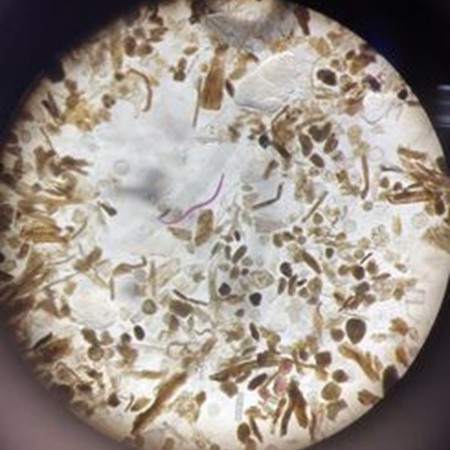
Microplastics Research by Aaron Ridall


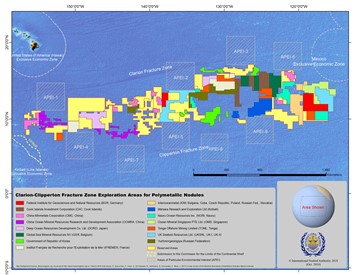 DeepGreen Metals Inc., a polymetallic nodules exploration and development company, has partnered with leading scientific research institutions and internationally renowned universities to study the potential impacts of removing polymetallic nodules up from the bottom of the Clarion Clipperton Zone (CCZ) of the Pacific Ocean, at over four kilometers depth. Polymetallic nodules are a rich, concentrated source of nickel, copper, manganese, and cobalt, the demand for which continuously increases.
DeepGreen Metals Inc., a polymetallic nodules exploration and development company, has partnered with leading scientific research institutions and internationally renowned universities to study the potential impacts of removing polymetallic nodules up from the bottom of the Clarion Clipperton Zone (CCZ) of the Pacific Ocean, at over four kilometers depth. Polymetallic nodules are a rich, concentrated source of nickel, copper, manganese, and cobalt, the demand for which continuously increases.
Florida State University Coastal and Marine Lab’s Dr. Jeroen Ingels will be joining in the research efforts of this massive study. His lab will lead the study on the impact of the mining activities on meiofauna, and explore their biodiversity and ecology in this remote and understudied part of the world. Meiofauna are the microscopic animals that live in between the sediment grains on the sea floor, where they fulfill important ecosystem processes and functions.
Collecting polymetallic nodules at a commercial level from the deep-sea floor has never been done before, 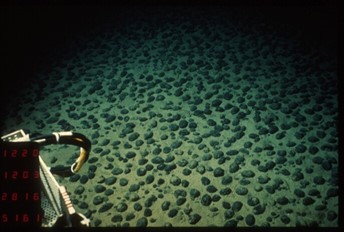 and the potential impacts of this collection are widely unknown. Dr. Ingels will analyze his findings and work with the other scientific institutions participating in this study to create a comprehensive, peer-reviewed impact statement that will then be presented to the International Seabed Authority (IAS), established by the UN Convention on the Law of the Sea (UNCLOS).
and the potential impacts of this collection are widely unknown. Dr. Ingels will analyze his findings and work with the other scientific institutions participating in this study to create a comprehensive, peer-reviewed impact statement that will then be presented to the International Seabed Authority (IAS), established by the UN Convention on the Law of the Sea (UNCLOS).
DeepGreen is committed to making all findings of the survey accessible to the public and shared within the international community. To stay up to date on this project, and to learn more about DeepGreen, click here.
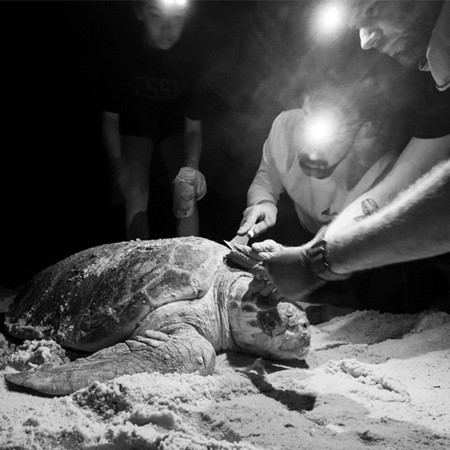
Our meiofauna work on Loggerhead sea turtles has been published recently and generated quite the stir in national and international press...National Geographic and Hakai Magazine covered it, and this week also a podcast from Laboratory News appeared.
I've posted all links below
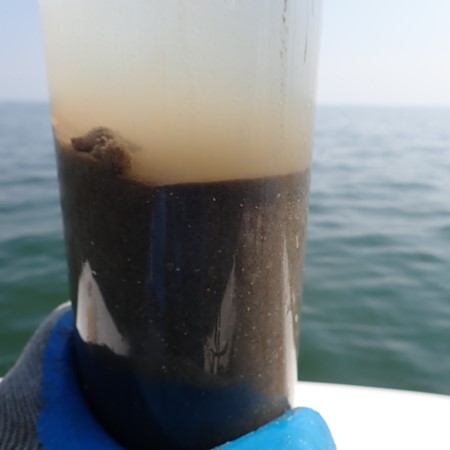
Tuesday 4 June was kickoff day for the @meiolab Benthic Survey. Thirty stations spread over three transects off the FSU Coastal and Marine Laboratory. We took out the Dusky and our handheld corer for testing the first 6 stations along western transect A. A few modifications are needed to facilitate sampling and make the process more efficient. Deploying and retrieving a coring device with brass weights and hammer many times proved difficult after a while (especially at the deeper stations) so we will install a swing arm with a block and tackle pulley for next run. 18 cores, 18 YSI deployments. All in all a success! A short video on our maiden sampling test here:
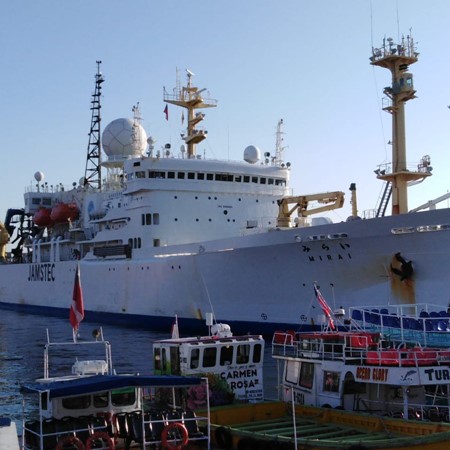
From 27 January to 3 March a Japanese/Chilean deep-sea research expedition (RV Mirai) was conducted in the southeast Pacific Ocean, targeting unexplored seamounts. The study area covers a longitudinal transect at 25-26°S from Chilean continental margin (77°W) to the Indo-West Pacific Region (112°W), targeting seamounts on the Nazca Ridge (Nazca-Desventuradas Marine Park), the Salas y Gomez Ridge and near Easter Island (now named Rapa Nui). The main goals are to investigate the biogeography and genetic connectivity of benthic communities; assess their response to different food supply regimes in terms of biodiversity, benthic standing stock, and describe the main sediment drivers (biogeochemical variables) affecting faunal distribution patterns. Dr. Jeroen Ingels (Florida State University Coastal and Marine Lab) and his PhD student Joseph Horacek are scientific partners in the project. Joseph jopined the cruise to take meiofauna samples as part of his PhD. He is particularly interested in the free-living nematode communities and the degree of nematode genetic connectivity between these remote seamounts. During his Master thesis, Joseph was investigating cryptic speciation and genetic connectivity of Platyhelminthes along the coast of the southeastern US. In his PhD he hopes to expand his expertise and learn ways of applying his techniques to a new meiofauna group, in an effort to answer questions on meiofauna geographic barriers, dispersal and connectivity, as well as environmental drivers for meiofauna biodiversity.
Seamounts from highly productive areas to oligotrophic areas will be sampled to test a first hypothesis related to how different food supply regimes to the seabed influence the benthic standing stock and biodiversity. It is thought that the Salas y Gomez Ridge acts as a transitional zone between Nazca Ridge and Easter Island Ridge, possibly forming as a biogeographic-genetic ‘stepping stone’ between both zones. Meiofauna samples will be taken on target seamounts using a multiple corer. Results will allow the description of soft-bottom benthic fauna from one of the most unexplored regions in the world; to improve our knowledge and understanding of biogeographic distribution patterns and their genetic connectivity and assessing the standing stock response to different food supply regimes for this fauna. The information obtained will allow a review of the geographic boundaries of bathyal benthic meiofauna in the region and potentially support management measurements for newly created Marine Protected Areas.
The overall project is led by Dr Eulogio Soto (Universidad de Valparaíso) and Dr Eduardo Quiroga (Pontificia Universidad Católica de Valparaíso) both from Chile. Dr Greg Rouse (Scripps Institution of Oceanography, University of California in Sand Diego) and Dr Jeroen Ingels (The Florida State University) are collaborative partners. The research is part of the “East/ Central Pacific International Campaign (EPIC)”, MR18-06 on board the R/V Mirai, Jamstec and will take place during Leg 3 (Chief Scientist: Dhugal Lindsay, JAMSTEC) from 27 January 2019, Valparaiso, Chile to 2 March 2019, Papeete, Tahiti, French Polynesia.
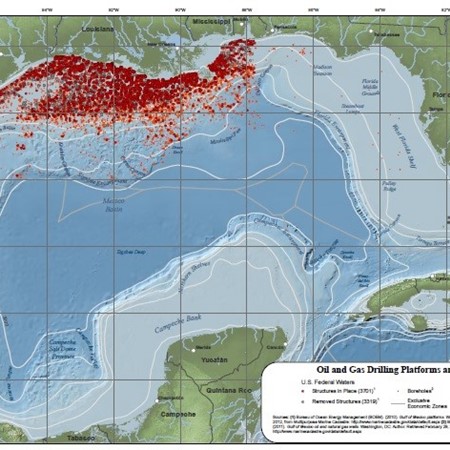
The Florida State University Coastal and Marine Laboratory, on the Gulf of Mexico (GoM) coast in north Florida, is a beautiful place. It is not uncommon there to see ospreys and bald eagles eyeing the coastline, pelican formations flying low, dolphins churning the water in a feeding frenzy or sharks cruising the shallows seeking out their next meal. It is also a place where a clear view of the horizon when standing on the beach is the rule, rather than the exception. Unfortunately, this is not the case everywhere in the GoM, with 1000s of miles of pipelines and 100s of oil and gas platforms to the west of Florida. The image that illustrates this like no other was shown during Tracy Sutton’s plenary talk at the Deep-Sea Biology Symposium in Monterey last September (Fig.1). This map shows the stark contrast between the unexplored nature of Florida’s Gulf waters, and the waters to the west, taken over by energy production. The contrast is the result of Florida’s federal exemption for oil and gas exploitation, and in Florida’s state waters there is an oil drilling ban which has recently been voted into the state’s constitution. Whether or not the federal exemption will last into the longer-term future is unsure, but in the meantime it does mean that the waters are unaffected by oil and gas drilling and are underexplored, with relatively little research effort in the region.
Most deep-sea research in the deep GoM has focused on the northern region, particularly areas that are important for the energy industry. These efforts, funded primarily by the Bureau of Ocean Energy (BOEM), have contributed to the discovery of extensive chemosynthetic and deep-sea coral (DSC) communities in the northern GoM, advancing our understanding of sediment infaunal communities. New research efforts recently funded by the National Academies of Science Gulf Research Program will expand physical oceanographic observations and study of the deep Gulf, but there will be few if any new observations on the outer shelf and escarpment in the eastern Gulf. The eastern GoM, therefore, remains relatively unexplored; the moratorium on oil and gas extraction has precluded this area from BOEM funding, and the deep west Florida slope is a remote and challenging place to work., In recent years, NOAAs Office of Ocean Exploration and the NOAA Deep Sea Coral Research and Technology Program have conducted a number of mapping and surveying cruises on the West Florida Slope. Multibeam bathymetry revealed a topographically complex area with scarps, mounds and ridges that are conducive to development of DSC ecosystems. Remotely operated vehicle (ROV) surveys confirmed the presence of abundant and diverse deep coral communities, including several large Lophelia pertusa reefs at depths of ~500m, and diverse assemblages of octocorals and black corals along the scarps and ridges of this topographically complex region (Fig. 2).
Under the lead of Dr. Sandra Brooke, a team of Florida State University (Brooke, Jeroen Ingels, Amy Baco-Taylor) and Florida Agricultural and Mechanical University (Steven Morey) scientists were awarded a grant under the NOAA Ocean Exploration call, to investigate deep-water ecosystems in the Gulf of Mexico.
The one-year project will focus on the deep (>1,000m) habitats and associated communities of the West Florida Slope. Bathymetric maps, habitat suitability models and a high-resolution oceanographic model will be used to select target study sites, and the oceanographic model will be validated using meiofaunal communities in a novel approach. New information on deep coral habitats and associated communities will be generated using digital imagery, and species assemblages will be identified using morphological taxonomy and genetic techniques. An ROV and benthic sampling cruise has been planned to take place in autumn 2019.
Collaboration with NOAA will ensure the new data and the high resolution oceanographic model is incorporated to refine the coral predictive habitat models for deeper portions of the Gulf of Mexico.
Deep ocean discoveries appeal to the public sense of exploration and help to create excitement for ecosystems that are inaccessible to the vast majority of people, but are vulnerable to human activities. This project has great scope for such discoveries and outreach opportunities. Information generated by this work will be disseminated to the scientific community, resource managers and the general public, to stimulate future research and conservation efforts.
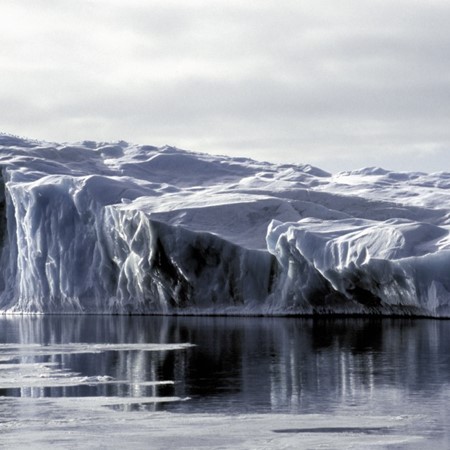
We recently published an article in Nature Climate Change, titled: “The Scientific Response to Antarctic Ice-Shelf Collapse” by Ingels et al. https://www.nature.com/articles/s41558-018-0290-y The short paper briefly reviews what we know about the ecology of sub-ice-shelf ecosystems and highlights the knowledge gaps that exist in ice-shelf ecosystem ecology. The article suggests that in order to advance our understanding 1) rapid-response research efforts are needed once ice-shelf collapse occurs, and 2) the international scientific community needs to use advances in marine technology to investigate ice-shelf systems before collapse occurs. With rapid environmental change continuing, international collaboration and moving towards prediction of ecosystem change is essential to inform policy and conservation. This article was written following an NSF-funded workshop that was held at the Florida State University Coastal & Marine Laboratory in November 2017; co-authors Prof. Richard Aronson (Florida Institute of Technology) and Prof. Craig Smith (University of Hawaii at Manoa) were the co-organizers of the workshop, which was attended by nearly 40 scientists. For more information on the workshop and outreach https://marinelab.fsu.edu/la…/ingels/outreach/polar-academy/
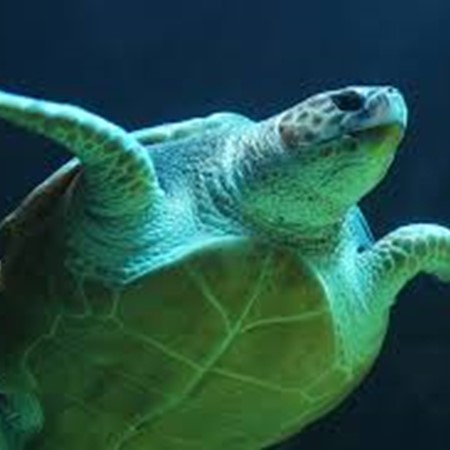
We were recently awarded a grant from the Sea Turtle Grants Program. The Sea Turtle Grants Program is funded from proceeds from the sale of the Florida Sea Turtle License Plate. Learn more at www.helpingseaturtles.org
Fuentes, Mariana (PI), & Ingels, Jeroen (Co-PI). (May 2018–May 2019). Life on Loggerheads: an integrated epibiosis study to assess foraging behavior, reproductive success and habitats of Northern Gulf of Mexico loggerheads nesting at St. George Island. Total award $10,571.
We will be hitting the field to collect the communities on loggerhead carapaces in June...stay tuned

March 16-17 we set off on the RV O.E. Wilson (Dauphin Island Sea Lab) for two days of benthic sampling with the MC200-4 Multicorer. Led by Prof. Stephen Landers (Troy University, AL) we sampled 13 stations along the Alabama coast in the northern Gulf of Mexico with the aim to document the microscopic meiofauna that live in between the sediment grains. Following an E-W gradient covering different sediment types and biogeochemistry we will investigate what the drivers are for meiofauna community structure, function and diversity and see if there are new species to be discovered. Previous investigations have show that there are in fact undocumented species in these parts of the Gulf of Mexico, and that the sedimentary environment has a significant influence on the meiofauna ecology on the seafloor. Dr. Ingels joined the expedition as part of his larger program of studying meiofauna along the northern Gulf of Mexico, starting West in Alabama and moving East into Florida waters and along the Florida Big Bend. More to follow soon. In the mean time, here is a time lapse video of some of the activities along the Alabama coast
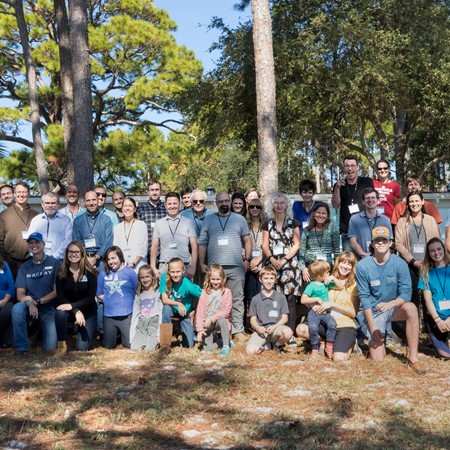
The calving of A68, a 5,800 km2, 1 trillion-ton iceberg, from the Larsen C ice shelf at the Antarctic Peninsula presented a unique and timely opportunity for research and education on Polar ecosystems in a changing climate. Funded through NSF, the FSUCML hosted 36 international scientists for a 2-day Workshop on Antarctic Ecosystem Research Following Ice Shelf Collapse and Iceberg Calving Events, organized by Dr. Jeroen Ingels (FSUCML) and Prof. Craig Smith (University of Hawaii at Manoa) and Prof. Rich Aronson (Florida Institute of Technology). At the meeting, the scientists reviewed and discussed the current knowledge and understanding of the responses of previously ice-covered ecosystems to abrupt ice-shelf collapse and ice berg scouring. As part of the workshop, the FSUCML Polar Academy Team (Dr. Emily Dolan, Dr. Heidi Geisz, Barbara Shoplock, Dr. Jeroen Ingels) had been visiting local schools and organizing events at the FSUCML to educate children about the many challenges Antarctic ecosystems are facing under climate change. Over 200 children attended lectures and afterwards took their creativity to create displays, dioramas, sculptures, videos, and online media (Bill the Krill; Adélie the Penguin). On the first day of the workshop the children presented their creations to the scientists. An incredible day where scientists and our own local Polar Ambassadors shared experiences and stories, and a great example of research, education and outreach going hand in hand. For more information and pictures from the workshop and Polar Academy, click here
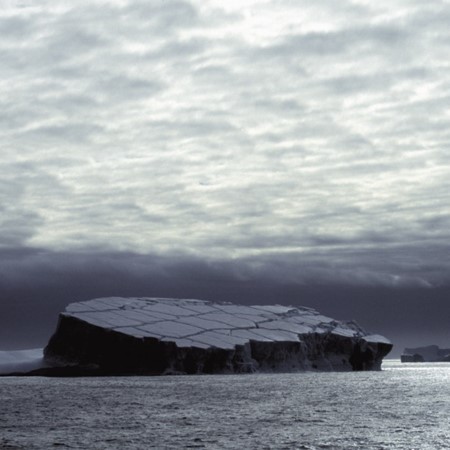
Worldwide publicity surrounding the calving of an iceberg the size of Delaware in July 2017 from the Larsen C Ice Shelf on the eastern side of the Antarctic Peninsula presents a unique and time-sensitive opportunity for research and education on polar ecosystems in a changing climate. The workshop will draw from the large fund of intellectual capital in the US and international Antarctic research communities. The two-day event will be held at Florida State University, Coastal and Marine Laboratory on the Gulf Coast, on 18 and 19 November 2017, organized by Jeroen Ingels (Florida State University, FSU), Richard Aronson (Florida Institute of Technology; FIT), and Craig Smith (University of Hawaii at Manoa; UHM). A consortium of researchers with expertise in Antarctic biological, ecological, and ecosystem sciences will be gathered to share knowledge, identify important research priorities and knowledge gaps, and outline strategic plans for research. The workshop will help advance scientific and public understanding of the continent-wide changes that Antarctic ice shelves and surrounding ecosystems are experiencing in response to warming, and will benefit Antarctic research, education, and outreach. The primary product will be a position paper focusing on priorities for an integrated research program to understand the ecological impacts of ice-shelf collapse along the Antarctic Peninsula. The workshop will also provide an immediate, interactive experience for K-12 school children with a hands-on ‘Polar Academy’, a children’s creative display session, and question-answer session during the workshop. Children will have the opportunity to interact with Antarctic researchers and become familiar with Antarctic science, organisms, ecosystems and current issues, feeding their scientific curiosity. The workshop is funded by NSF OPP #1750903
I am a marine ecologist with a wide interest in benthic biodiversity, ecosystem functioning and food web ecology in marine ecosystems. After an MSc degree in Zoology and an MSc in Marine and Lacustrine sciences at Ghent University, I completed a PhD in deep-sea biology and ecology, specializing in meiofauna and free-living nematodes (metazoans smaller than 1mm) and working together with marine scientists across Europe. After my PhD I was involved in several international projects focussing on deep-sea habitats and Antarctic marine ecosystems under pressure of climate change before moving to the UK with an EU Marie Curie Fellowship to develop more holistic meiofauna research in coastal and shelf environments at Plymouth Marine Laboratory.
At the FSUCML my research focusses on creating a better understanding of the role of meiofauna in marine ecosystem function, and advancing our knowledge of meiofauna and nematode biology and ecology. Meiofaunal organisms are abundant in all marine ecosystems and play a pivotal role in key processes and functions. Despite their ecological importance, they are often overlooked and many aspects of their biology and ecology are still unknown. Research projects aim at understanding what drives (meio)benthic diversity and how it affects marine sediment functions with links to important processes such as biogeochemical cycling and food-web flows and the assessment of anthropogenic and climate-change impacts. Some of the key outstanding issues include:
To get answers to the outstanding questions (and generate new ones!) a multidisciplinary approach is required. Using long-term monitoring analysis to understand natural spatial and temporal meiobenthic patterns and variability, in combination with laboratory mesocosm/microcosm and in situ experiments to assess impacts of environmental change on meiofauna diversity and function, underpins many of my research activities. If we want to move further, however, we also need more integration of field and experimental results into coupled ecosystem models to develop, consolidate and validate the (meio)benthic component, whilst assessing current and future meiobenthic contributions to ecosystem function, and ultimately their contributions to ecosystem goods and services, and the socio-economic value of marine ecosystems.
Aside the core research outlined above, I also value the fundamental building blocks that have led to our current level of understanding. These include 1] characterizing and describing novel biodiversity, and 2] gaining insight into the biology of meiofauna organisms (e.g. life-history, behaviour, communication, etc.). Both are research topics I pursue throughout my research.
In recent years, I have been involved in several regional and global assessments of anthropogenic and climate-change impacts on marine ecosystems with for instance a chapter in the First UN World Ocean Assessment and reviews of global change impacts in the Southern Ocean. As public awareness of the importance of the Global Ocean increases, such efforts are important to continue as they support science-policy-public communication and ultimately the successful management of – or “caring for” - the marine resources humankind relies on so heavily.